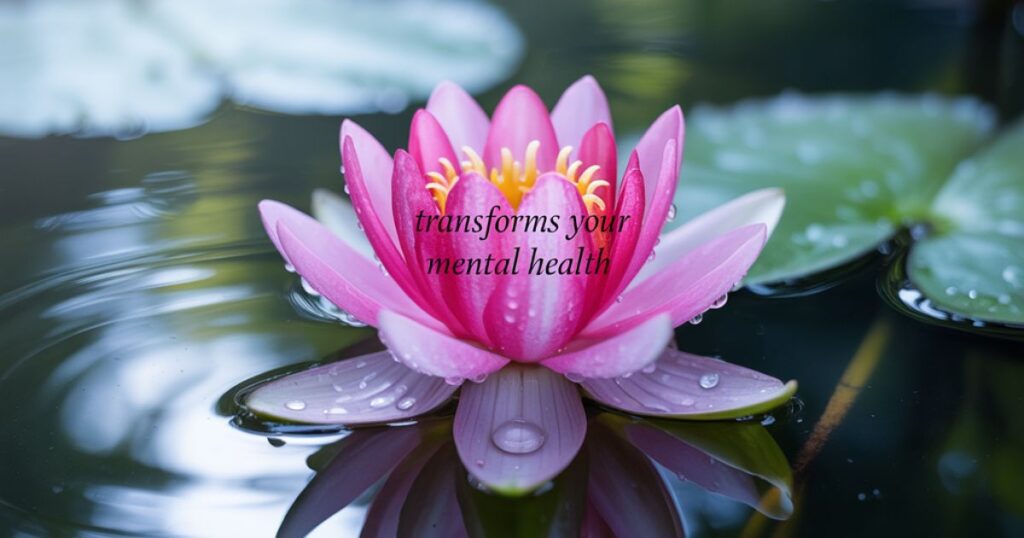Introduction: Transforms Your Mental Health Fast
It’s easy to forget how much your mind needs care—just like your body. But when you move your body, something powerful happens inside your brain. Exercise doesn’t just make you stronger; it transforms your mental health in ways that surprise most people. It boosts your emotional well-being, clears brain fog, and builds inner strength. This isn’t just about workouts—it’s about creating a daily routine for happiness and using small habits to feel better fast. By adding movement to your life, you also unlock powerful self-care habits, improve your focus, and enjoy deep mental clarity. Let’s explore how movement can change the way your mind feels—starting today.
Why Mental Health Deserves Daily Attention
Your mental health affects every part of your day. From the moment you wake up to how you handle stress, your emotions shape your decisions and actions. Ignoring your mental health leads to stress, confusion, and even health problems. Building mental strength naturally starts with paying attention to what your body and mind need every day.
People who take their emotional health seriously enjoy better sleep, focus, and relationships. A strong mind helps you bounce back from problems, set goals, and find joy in small things. If you’re feeling stuck or tired often, those are signs you need a mental reset. Daily movement, mindful breathing, and checking in with your emotions are simple coping strategies that can bring lasting peace.
Journaling for Gratitude, Healing & Daily Happiness
After you work out, your mind is clear. That’s the perfect time to start gratitude journaling. Writing down what made you smile or what you’re thankful for boosts your happiness levels. This is more than a habit—it’s one of the top mental health tips to use with your fitness routine. The benefits of writing your thoughts include more self-awareness, less stress, and better sleep.
If you’ve never done it before, use journaling prompts for beginners like “What went well today?” or “What do I want to feel tomorrow?” Pairing writing with movement turns exercise into deep self-care habits. It helps you reflect, recharge, and feel grateful even after a long day. That’s how you create a daily routine for happiness.
Power of Exercise on Your Mind: Move to Feel Better
Exercise changes your brain. It releases chemicals like endorphins and dopamine that boost your mood fast. This is why many doctors recommend it as one of the best stress relief techniques. People who move daily feel more focused, calm, and confident. It’s not just for weight loss—it’s a tool to improve mood naturally.
Movement also helps you think clearly and reduce anxiety. Even a short walk or dancing in your room can bring quick results. This is the magic of exercise—it trains your body and mind together. If you’ve been feeling low or anxious, this is your sign to move. Because moving is how you create mental clarity.
Try Arts, Hobbies, and New Activities to Spark Joy
When you try new things, your brain wakes up. Combining exercise with creative hobbies like dance, group yoga, or tai chi brings fun and mental energy into your life. These activities are not only good for your body—they also help you feel more alive, expressive, and connected to yourself.
Don’t be afraid to try something new. You don’t need to be perfect, just curious. Creativity improves emotional well-being by letting you release emotions in healthy ways. It also builds confidence. Adding joyful movement to your life is one of the easiest mental health tips for daily life that actually works.
Strengthen Your Mental Health Through Healthy Relationships
You feel better when you’re surrounded by people who care. Healthy relationships can change your mindset completely. Exercising with friends or family builds trust and boosts motivation. These are moments where you laugh, support each other, and grow stronger—not just physically, but mentally too.
If you’re struggling, look around at your circle. Who lifts you up? Who drains your energy? Making time for people who care is how you begin how to build strong bonds. You can also try fitness classes or walking clubs to meet people. These shared goals help you feel less alone and teach you why relationships matter for mental wellness.
Digital Detox: Take a Break from Technology
Technology is helpful, but too much of it drains your mental energy. Every notification pulls your focus away. That’s why it’s important to unplug from technology sometimes. Replace screen time with a walk, workout, or simple stretch. These moments of stillness help your mind recharge.
Ask yourself—is digital detox good for your mind? The answer is yes. Less screen time means better sleep, more connection, and less comparison. It’s one of the best ways to disconnect from tech and reconnect with your own life. Start by putting your phone away for an hour a day. Over time, your brain will thank you.
Create Simple Yet Soothing Daily Rituals
After a workout, cool down with calming activities. Stretching, deep breathing, or a warm shower can be part of your mindfulness rituals. These moments create a pause in your day. They reduce stress and make you feel safe. That’s what makes rituals powerful—they bring peace through small, daily actions.
If you want to know the steps to create a relaxing ritual, start with one habit. Maybe it’s lighting a candle after exercise or journaling before sleep. These routines build comfort over time. They’re also a great way to relax and recharge your brain, making you more present and focused.
Practice Forgiveness: Letting Go for Emotional Peace
Forgiveness isn’t about forgetting. It’s about freeing your mind from pain. Moving your body can help release anger and sadness. Whether it’s boxing, running, or dancing, you burn emotional energy and invite peace. This is how exercise supports forgiveness and healing.
It takes strength to let go of hurt. But doing so creates room for joy. Learning how to practice forgiveness isn’t easy, but it gets easier with time and effort. Try journaling after workouts, talk to a friend, or seek help if needed. Forgiveness makes your mind lighter, your thoughts clearer, and your heart happier. That’s true emotional freedom through forgiveness.
Step Outside: Nature’s Healing Power for Your Brain
Exercising outdoors gives you double the benefit. You move your body while enjoying the sun and fresh air. This creates an outdoor mental boost. Just 20 minutes outside can change your mood. That’s why so many experts talk about how nature helps with stress.
Walking in a park, doing yoga on the grass, or hiking a trail connects you to the earth. This helps lower anxiety, clear your mind, and lift your spirit. It’s called outdoor therapy for anxiety and it’s free, fast, and powerful. The mix of exercise and nature is one of the top tools for nature and healing.
Seeking Help: How to Find the Right Therapist for You
Sometimes, exercise alone isn’t enough. That’s okay. Knowing when to see a therapist is a sign of strength, not weakness. You might need help dealing with past trauma, anxiety, or confusion. In that case, explore therapy options near me to find someone who understands your journey.
Fitness supports therapy, and therapy supports fitness. The two go hand in hand. Speaking with a professional gives you tools and clarity that movement alone can’t provide. If you’ve tried everything and still feel stuck, don’t wait. Seeking therapy and counseling could be the most powerful step you take.
Table: How Different Exercises Impact Mental Health
| Exercise Type | Mental Benefit | Best For |
| Walking Outdoors | Lowers stress, improves clarity | Beginners, daily routines |
| Dance Fitness | Sparks joy, boosts creativity | Emotional expression |
| Group Classes | Builds social bonds, motivation | Community and connection |
| Yoga or Stretching | Relieves anxiety, promotes mindfulness | Relaxation and reflection |
| Strength Training | Increases confidence, reduces depression | Focus and empowerment |
| Hiking in Nature | Combines movement with nature and healing | Grounding and energy renewal |
Conclusion
Your mind needs just as much movement as your body. Now you’ve learned how to boost your mental health using exercise and simple habits. Whether it’s taking a walk, dancing alone, or talking to a therapist—every step counts. The power lies in consistency.
Start small. Move daily. Reflect deeply. These actions will unlock emotional strength, joy, and peace within you. Bookmark this guide, share it with someone you care about, and remember—you already have everything it takes to feel better.
FAQs:
What is the hardest mental illness to live with?
Schizophrenia is often considered the hardest due to its impact on reality, thinking, and social functioning.
Is The Secret of NIMH based on a true story?
It’s loosely inspired by real experiments at NIMH, but the story and characters are fictional.
What is the dark side of The Secret of NIMH?
It explores animal experimentation, death, and psychological trauma through a darker, mature tone for animation.
Why did Don Bluth leave Disney?
He left due to creative disagreements, feeling Disney had lost its storytelling magic and originality.
What is the lee of the stone?
In The Secret of NIMH, it symbolizes protection, safety, and shelter from danger.




This is a great reminder to take small steps towards self-improvement. Moving daily and reflecting deeply can truly transform our emotional well-being. Sharing this guide with loved ones is a wonderful way to spread positivity. Remember, the power to feel better lies within us. How can we incorporate these practices into our daily routines more effectively? German news in Russian (новости Германии)— quirky, bold, and hypnotically captivating. Like a telegram from a parallel Europe. Care to take a peek?
🥰